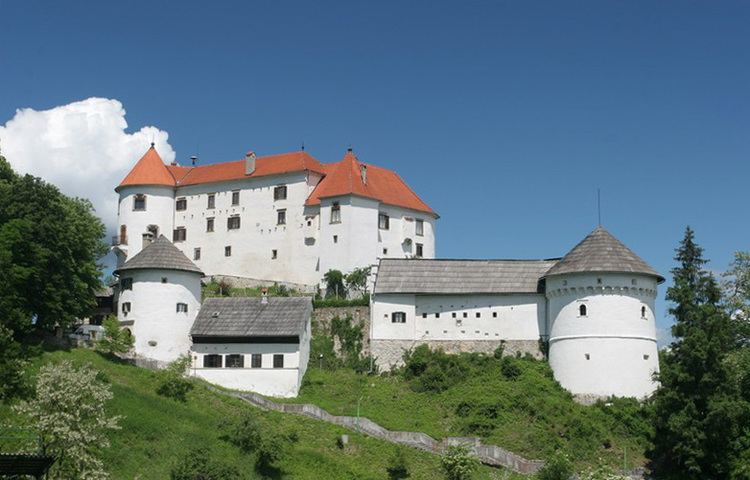Owner Government Open tothe public Yes Built 1270 AD | Controlled by Government Condition Good Phone +386 3 898 26 30 | |
 | ||
State of fiction velenje castle dmk
Velenje Castle (Slovene: Velenjski grad) is a well-preserved castle in Velenje, Slovenia that was owned by the Kunšperk family, followed by their relatives the Ptujs and the Liechtenstein families. The castle houses a museum of art and culture.
Contents
- State of fiction velenje castle dmk
- State of fiction velenje castle dmk 1
- Geography
- History
- Architecture
- Museum
- Popular culture
- References
State of fiction velenje castle dmk 1
Geography
The castle, above its town Velenje, is in the Šalek Valley (Slovene: Šaleška dolina), located on the top of a hill to the west of the town. Over the centuries this castle, along with two others in its vicinity, Šalek and Ekenštajn, has played a key role in controlling the routes from the Celje Basin to Carinthia. Archaeological excavations have revealed that the valley where the castle is located was the settlement of prehistoric man. Since medieval times, Velenje Castle in the Šalek Valley was also known as the "Valley of Castles" for the over twenty castles built in this valley.
Approach to the castle is from a foot track from the bus station in the town, and also by road from the old town.
History
The castle was a strategically important fortress first mentioned in 1270; from it various owners controlled the routes from the Celje Basin to Carinthia. From the 14th century, the castle's ownership has gone through several noblemen. The castle seen in the present shape was fully refurbished in the early 16th century by the Wagen von Wagensberg family and also in subsequent centuries. Following the complete renovation, the castle became their Renaissance residence. In the 19th century, Karl and Bianca Adamovich owned the castle. It was the summer residence of Count Coronnini-Kromberg until 1943 when he was evicted by the Germans. Subsequent to World War II, it became a government property. The castle was again renovated after 1957 and it now also houses a museum.
Architecture
The castle has been built conforming to the topography of the land, on a rounded hill. It has a five-pronged exterior wall forming a large courtyard, which has a well and also a large flowerbed combined with an elegant arcade. A defense tower, a triangular shaped fortification, is built as part of the wall on the northeastern side of the courtyard. The residential buildings are located on the southeast corner; these are provided with basement cellars.
Museum
The museum located within the castle premises has a diverse collection in its many galleries. Its unique art collections include African art (only one of its kind in Slovenia with 1000 art pieces which includes furniture, jewelry, music instruments, masks and puppets, and the carved sculptures of the donor), which was donated to the museum by the Czech-born sculptor Frančišek Foit; contemporary art by local artists of Slovenia, artifacts related to the history of the valley from the Roman period and Baroque of the Middle Ages through the centuries, including figureheads of Tito and Kardelj leaders of Yugoslavia during communist rule in Slovenia, remnants of two mastodons, a chronology of Velenje emerging as a town and Baroque artwork from the Church of St. George (Slovene: sv. Jurij) at Škale. The museum also has a reconstructed grocer's shop of the 20th century, a reconstructed inn of the 1930s, a model of a coal pit, and many other artifacts. The Slovenian Coal Mining Museum (Slovene: Muzej premogovništva) is also located in the vicinity of the castle where deep coal mining shafts are visitor attractions.
Popular culture
The Velenje library holds cultural and music festivals within the precincts of castle.
